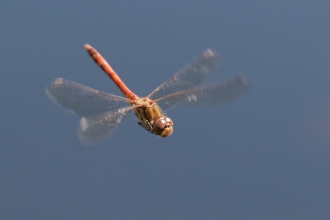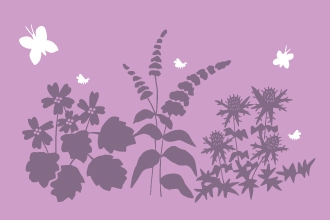Woodland Butterflies
See some of the rarest butterflies in Britain. Look to the skies for canopy-dwelling butterflies like purple emperor and purple hairstreak, scanning the treetops for the chance to spot them in flight. Bramble patches are good spots for passing white admirals who are partial to the blossoms, and are a favourite for the black, brown and white-letter hairstreaks. While many of the UK's 59 butterfly species are in decline, a handful of woodland butterflies are bucking the trend, including the silver-washed fritillary, white admiral, and speckled wood butterflies, who are all expanding their ranges.
What to look for
Almost all our fritillaries are on the decline, and species have particular plant requirements for their caterpillars: heath fritillary prefers the uncommon cow-wheat, while devil’s-bit scabious is the marsh fritillary's favourite. Violets attract pearl-bordered, small pearl-bordered, silver-washed, dark green, and high brown. Our rarer hairstreaks lay their eggs on mature blackthorn scrub along hedgerows or on the edge of woodland, while the delicate wood white requires vetches and vetchlings along sunny woodland rides.
Sunny glades, rides and woodland edges are some of the best places to look for a variety of species. Bringing along your binoculars and locating the larval foodplant of specialist butterflies can make searching that bit easier.
Where can I see them?
Warton Crag
Nationally important area of limestone habitat including grassland, woodland and limestone pavement, supporting some of Britain’s rarest butterflies, including pearl bordered fritillary and high brown fritillary, as well as an array of other rare invertebrates and plants.
Brockholes Nature Reserve
The rich variety of butterfly species recorded around the reserve in the last year has included common blue, red admiral, peacock, comma, meadow brown, gatekeeper, speckled wood, small skipper, large white, small white, green veined white and most notably of all the white-letter hairstreak.
Salthill Quarry
At the edge of the wood and invading the grassland are numerous wild roses, surrounded by an array of colourful butterflies. Butterflies spotted include the common blue and the orange-tip.
Heysham Nature Reserve
The diversity of habitats has produced a wide variety of flowering plants with over 215 species recorded including bee orchid and yellow-wart. These in turn produce the number and variety of butterflies and day-flying moths, notably burnet companion. The 21 species of butterflies recorded has seen some changes over the years.
Small skipper, speckled wood and gatekeeper are now abundant but were absent prior to 1990, whilst grayling and wall brown have declined to the point of extinction.
More information
A group of butterflies is called a swarm.






